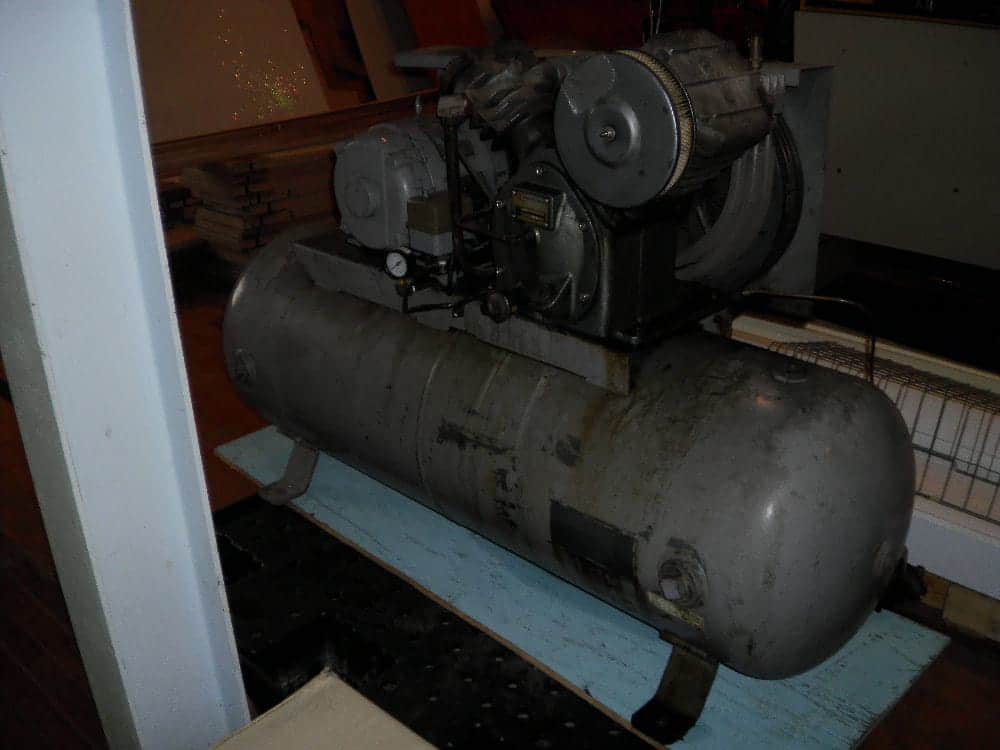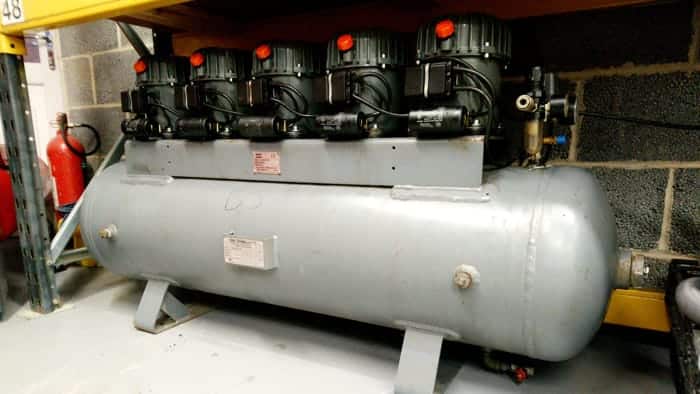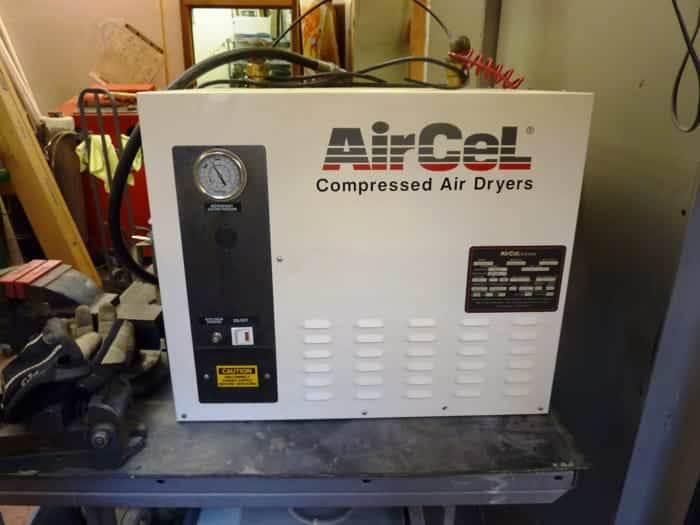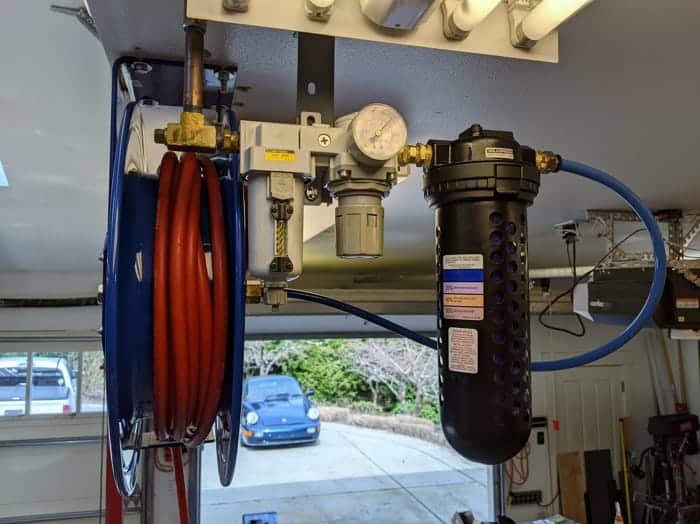The moisture in your air compressor lines is the main factor that wears down the device. If you don’t take care of this problem, the cost of maintenance is inevitable.
So, how to keep water out of air compressor lines?
Why do you need to keep the air compressor lines free of moisture and dust? I will give you in-depth instructions and answers on these issues.
After reading this post, you won’t ever worry about a dirty air compressor system again. Keep scrolling down, and I will show you why!
Why Do You Need To Keep Water Out Of Air Compressor Lines?
The air compressor systems will inevitably produce moisture in the lines and machine. The water comes from the ambient air, which is compressed and cooled by the device.
For this reason, it’s impossible for the compressors to operate without building up the moisture in their lines. Do you need to get rid of the water in the pipes?
The water built up in the compressor systems can lead to severe problems like internal damage, corrosion, water hammer, and malfunction of the system.
Regarding the damage, corrosion is the first problem to consider.
Corrosion
Corrosion is developed by three main factors: air, moisture, and metal surfaces.
Since the compressor’s lines are usually made of metal, the water will corrode their surfaces in the long run.
This is very detrimental to your system and can reduce its lifespan. In severe cases, too severe corrosion can make the system malfunction or even explode.
The machine cannot operate with its highest capacity anymore.
Malfunction
Malfunction is another major problem caused by inner moisture.
When there’s too much water in the system, the line will get blocked and lead to a water hammer.
It will cause annoying knocking sounds when the machine operates and gradually wear down your system.
How To Keep Water Out Of Air Compressor Lines?
I have covered the reasons you must keep your air compressor lines free of moisture and liquid.
Now let’s discover the basic ways to get rid of the internal water in your system.
Ensure you follow the instructions carefully to achieve the highest cleaning result and avoid damaging your system.
Step 1 – Bleed Your Air Compressor
Before cleaning your air compressor, you need to get rid of the remaining condensation build up in the system.
For the regular portable compressors with medium sizes, you can use an air nozzle to do this task.
The air nozzle will emit compressed air into the system and eliminate the internal condensation. Pay attention to the valve located at the tank’s bottom.
You can open the valve and clean the tank regularly to keep the compressor clean. It’s the place where the water and condensation concentrate the most.
You can manually use the valve to drain off the water inside the tank. If you choose this method, ensure to perform it on a daily basis.
However, you can use a time-based pneumatic drain to perform this task automatically. This system will open the valve to drain the water using its built-in water sensor.
Therefore, it’s an ideal choice if you don’t have time to clean regularly or the tank’s location is too hard to access.
If you want further instructions on cleaning the compressor’s tank, consider watching this video.
Step 2 – Stock Inline Air Filter
The next step is to install the water separation inside your compressor system. For this stage, you need a filtration water separator, also known as a water filter.
This small system will discard the built-up water inside the compressor lines using centrifugal force. However, a filter cannot remove all the internal water (roughly 50%).
Therefore, it’s still not an optimal option if you want a completely dry compressor line.
Some Other Methods To Keep Water Out Of Air Compressor Lines
Though the methods mentioned are effective, they cannot ensure a completely dry compressor system.
A dry environment is mandatory for any production site and healthcare environment.
Therefore, you will need to resort to the solutions below to achieve a higher draining capacity.
Refrigerated Air Dryers
You can opt for refrigerated air dryers, which bring higher water drainage capacity.
These systems will chill the inner air and remove the water, which is quite similar to an air conditioning system.
Principally, there will be much less moisture built up in a dry atmosphere than in hot air. The refrigerated air systems will cool the inner atmosphere down to roughly 32-40°F.
In this condition, the condensation will happen faster, and the water vapor slowly turns into liquid form.
Then a water trap will collect the liquid and discard it out of the system via a drain valve.
The dry and cooled air will be reheated before releasing back into the system.
The 32-40°F range should work with the majority of air compressor systems on the market.
Desiccant Air Dryers
Another popular water draining method for compressor lines is the desiccant air dryers.
While refrigeration works well with most air compressors, some systems will require a much dryer atmosphere.
In this case, you will need a desiccant air dryer to remove the water. It operates by discarding the vaporized water in the air circulation via chemical reactions.
When a desiccant comes into contact with water, it will form a chemical bond.
For this chemical reaction to take place, the desiccants resort to a molecular sieve or alumina.
However, some desiccant air dryer systems also use traditional heating methods to adjust the air temperature.
Though the processes may sound a little complicated, the ultimate purpose of this system is to cool the internal air down to below zero °F (around -40 and -100°F).
This temperature range is much lower than the capacity of refrigerated air dryers. As a result, virtually no moisture or water vapor can remain in the air circulation of the compressor lines.
However, The desiccant dryer is more power-consuming than the other systems. It also consumes a large part of the air supply in the compressor.
Therefore, you only need this solution for extra dry drainage or for the systems that operate at a much lower temperature.
It brings the highest water cleaning capacity and ensures a completely dry line.
FAQs
Now let’s discuss some common questions people frequently ask when cleaning the air compressor lines.
What Lead To Moisture In The Compressor System?
The moisture building up in the lines is caused by two factors: pressure and temperature.
Normally, the hotter and drier airflow can hold more water vapor than the cool atmosphere.
When the compressor system captures the airflow, it will compress the air about 12 times the outer atmosphere environment.
This compressed airflow cannot hold as much water as the normal atmosphere.
As a result, condensation will happen faster, and the air inside the compressor system will turn into liquid and lead to moisture on the lines.
How Dry Should The Compressed Air Be?
Not every drying system works with all types of air compressors.
It depends on many factors, such as the usage, atmospheric conditions, and the allowed temperature of the compressors.
For example, the ideal compressed air is different if you use a room for painting or doing production.
For the tasks that are more sensitive to the water vapor, the compressed air should be much drier.
Why Is My Air Compressor Making So Much Water?
If your compressor is producing excessive water, there is a problem with its drain valve. You should try to open the machine and check for its components.
If the problem cannot be detected, seek help from professional fixers.
How Do I Keep Moisture Out Of My Air Compressor?
The easiest method is to move the compressor to a drier atmosphere.
If it’s possible, you can place the compressor inside the house to reduce the moisture retained in the system.
Some other methods are to install air filtering systems, such as refrigerated or desiccant air dryers.
Do I Need A Dryer For My Air Compressor?
The answer is yes. A dryer is essential if you need to keep your compressor clean of moisture.
It will prevent malfunction or corrosion inside the compressor’s lines that wear down the system in the long run.
You can also manually drain off the compressor’s tank, but it’s time-consuming.
Some air compressors are installed in hard-to-reach places, making it hard to clean the engine.
Final Thoughts
It’s critical for your health and the compressor’s durability that you clean the internal water regularly.
So, did you know how to keep water out of air compressor lines by now?
Ensure that you consider your usage and compressor type carefully before choosing the most optimal method.
If there are any difficulties or further issues you want to discuss, feel free to use the comment section and let me know.
Thank you for your time!





